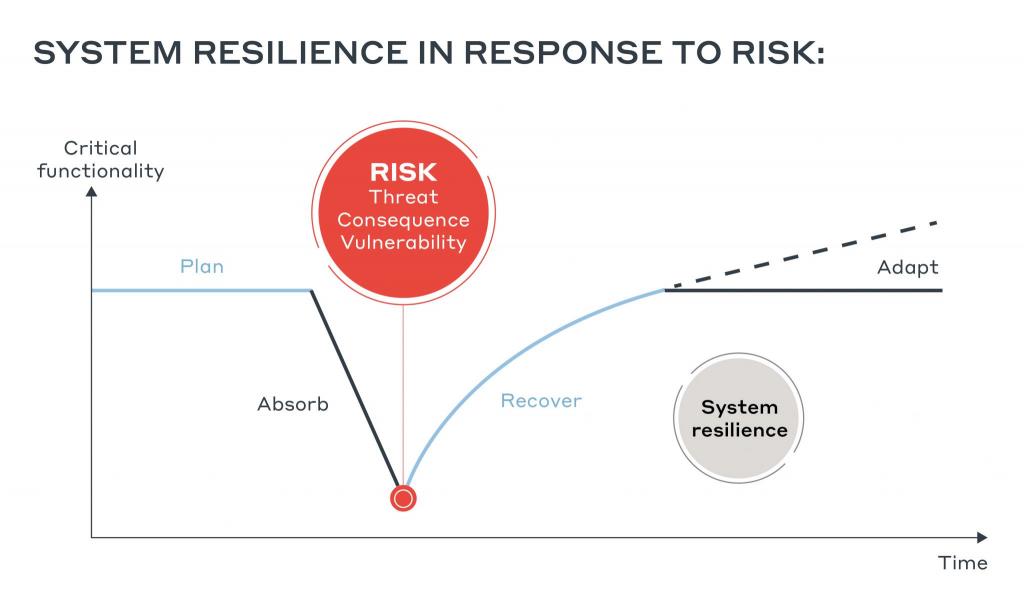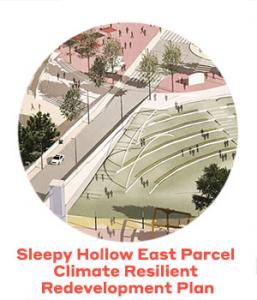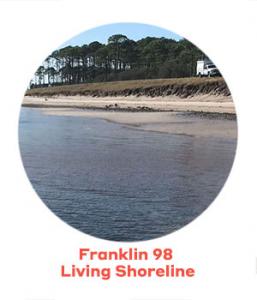Shaping Tomorrow’s Resilient Cities Starts Now
The world’s cities are facing immense pressure to become socially, economically, and environmentally resilient.
From rising sea levels, wildfires, and increased water scarcity, to a recent rethink of the social and economic underpinnings – largely brought on by the shocks and stresses of the Covid-19 pandemic – that shape modern society, cities face an increased burden to be resilient and resistant to the effects of climate change and rapid urbanisation. However, we’re yet to see this idea integrated into practice.
Although momentum is gathering pace around how cities can adapt to an evolving world, what’s often overlooked is how future risks and costs can be mitigated. The key to actioning future-proofed cities starts with meaningful, resilient master planning and human-centric urban design. To address this burgeoning need, here are three vital considerations towards creating holistic, impactful, scalable resilient city solutions:
Mitigating & Adapting to Climate Change
Climate-related impacts are widespread and growing in magnitude. According to the 2021 report from the Intergovernmental Panel on Climate Change (IPCC), aggressive action is needed if we’re to limit temperature rises to 1.5C above pre-industrial levels in line with the 2015 Paris Agreement. The report shows that emissions of greenhouse gases from human activities are responsible for approximately 1.1°C of warming since 1850-1900 and finds that, averaged over the next 20 years, global temperature is expected to reach or exceed 1.5°C of warming.
The risks of a warming world are stark, with widespread fires and deadly flooding events effecting parts of Europe and the US in 2021. Moreover, the Arctic Circle lost an area of sea ice equivalent to the size of Florida between June and mid-July 2021.
In light of this, it’s imperative we confront the climate crisis on two fronts:
- Mitigation: Increase actions that limit the extent and rate of climate change
- Adaptation: Adopt and scale up initiatives and measures to reduce the vulnerability of natural and social systems real or potential threats from climate change

Figure 1: An example of a system responding resiliently to an acute shock. Climate-Resilient Infrastructure Officer Handbook – Global Center on Adaptation (gca.org)
Closer to home, the Middle East & North Africa (MENA) is facing challenges as the vulnerability of GCC cities to warmer annual temperatures, water scarcity, and rising sea levels becomes more pronounced. For example, the majority of critical infrastructure for essential life (e.g. desalination facilities and power plants) along with vital economic hubs (e.g. ports and Oil & Gas complexes) are coastal and therefore prone to sea level rise.
To mitigate and adapt to these issues, future projects, and even existing assets, need to embody both structural measures (e.g., nature-based solutions and resilient infrastructure) in parallel with non-structural measures, such as policy improvements, increased financing through PPPs, or early warning and monitoring systems within in vulnerable coastal zones.

Figure 2: The climate resilience toolkit goes beyond infrastructural measures to include capacity building, policy, financing etc.
Embed feasible planning for viable city frontiers
Common practices and pillars of urban design that we take for granted aren’t necessarily viable for future contexts. As the economic, environmental, and cultural fabrics of cities change, the way we plan, design, and implement resilient infrastructure must also transform.
For example, contemporary modes of transport planning may be obsolete in the near future as oil reserves decline, thus driving more resilient, sustainable planning and design which factor in active transportation and low-carbon alternatives. The same implications apply to the built environment, with principles for resilient urban planning and design requiring an overhaul as the panacea for post-carbon, climate-responsive buildings come into fruition.
At the heart of this, integrating resilient solutions early on at any step of the design process can empower better risk management and mitigate uncertainties to the urban makeup. The World Bank is quite active in this space, with the launch of its Resilience Booster Tool in 2021 to provide a scoring system of projects that are climate resilient in order to help both companies and institutions who are creating development projects that consider climate change, to help them navigate climate shocks and stressors.
Strengthening institutional capacities is one part of the equation to enable cities to respond to hazards and vulnerabilities. However, it’s also essential we empower and invest in our city systems by capturing hazards in pre-design and devising resilient plans that are adaptive and fit for purpose.

Figure 3: It is critical to integrate climate resilience not only into the pre-design phase of a project, but throughout the entire project lifecycle.
Integrate holistic resilience frameworks
As the world shifts towards increased urbanisation, the need for resilient cities will only grow. Although environmental resilience is the need of the hour, resilience is also about forming connections that make communities more durable despite changing conditions.
In light of this, the concept of urban resilience extends to multiple facets of the placemaking paradigm with a nascent need to create robust cities that embrace technology solutions to mitigate future risks and ensure the return-on-investment payback period for developers and investors alleviates costs.
An example of this can be seen in Saudi Arabia as the Kingdom’s giga-projects come to life. By embedding front-end strategic planning, pioneering smart city endeavours are not just looking at sustainability, but climate resilience and energy security and resilience earlier on in the development pipeline.
See our climate resilience advisory in action…
You can reach out to our author, Omar Saif via email.



